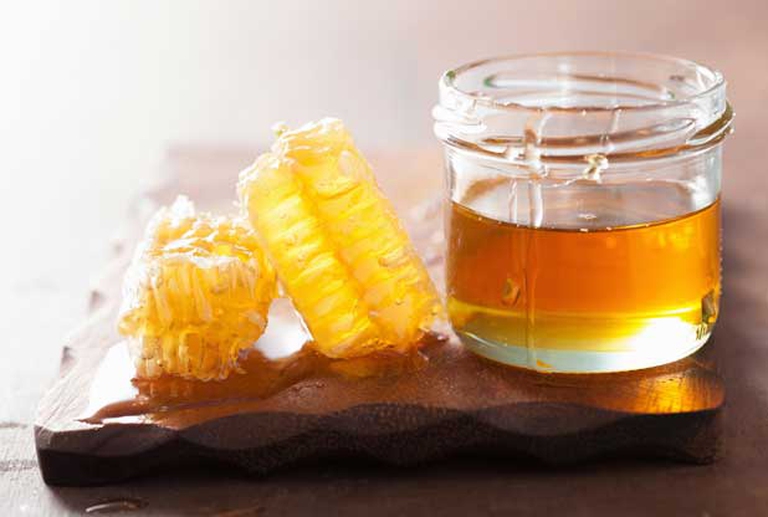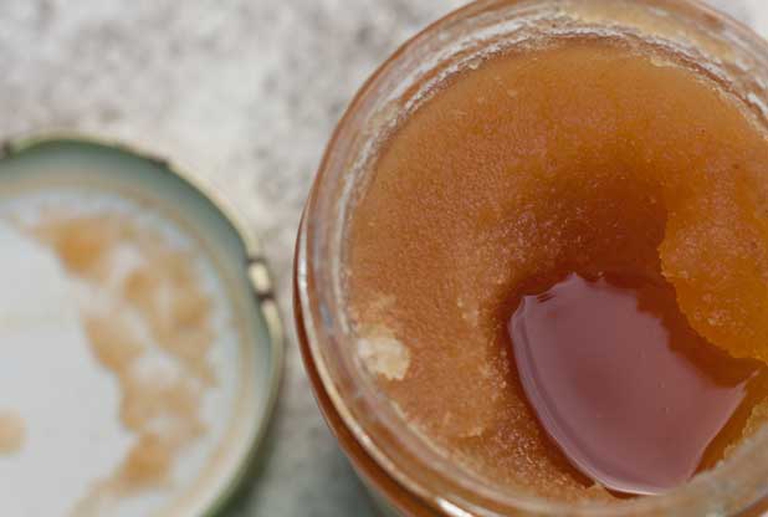
Factory farming conditions and antibiotic-resistant pathogens emerging as a result of them pose an existential threat to humans in the form of zoonotic diseases. Why it’s time to produce and consume food more thoughtfully.
To produce honey, bees collect flower nectar, convert it with their own body substances and they store it in honeycombs where they let it ripen. Basically, once foraged, nectar is stored in the honeystomach of the bee, where it is mixed with the enzymes secreted by its salivary glands, and then it is taken to
To produce honey, bees collect flower nectar, convert it with their own body substances and they store it in honeycombs where they let it ripen. Basically, once foraged, nectar is stored in the honeystomach of the bee, where it is mixed with the enzymes secreted by its salivary glands, and then it is taken to the hive. Here, the bee backs up the nectar in the mouth of another bee that backs it up in the mouth of another bee and so on. Through this process bees add more enzymes to the nectar. When raw honey is ready, it is stored in the cells of the honeycomb, which are sealed with wax to preserve it. Beekeepers begin to harvest honey when the comb is full. At this point, honey is extracted from honeycombs, filtered and put into a ripener until the wax and propolis surface and the honey can be extracted from the bottom.

If compared to sugar, honey wins in many respects: while the former just consists of sucrose, the latter contains fructose, glucose, maltose, organic acids, vitamins, trace elements, enzymes, aromatic substances. Thanks to its composition it is considered an energising superfood because it is easily absorbed but, mainly, a food rich in precious substances. Honey was employed as a remedy for internal and external use since ancient times and it is praised by researchers for its endless therapeutic properties: it is an anti-anemic, antimicrobial, it disinfects the intestines, regulates body functions, it is an anti-infective, it prevents heartburn, it is an antibiotic and digestive tonic. It prevents the development of dangerous germs like streptococcus and staphylococcus. It is a febrifuge, sedative, it regulates psychic tone and the functioning of female sexual organs, it soothes the cough, and it is relaxing. It helps the liver to absorb alcohol, chemical additives and nicotine. And if it’s good it can even prevent tooth decay.

But which is the better variety? We’ve asked Livio Colombari, beekeeper of the farming company Chelidonia in Montevecchia (Northern Italy). “In the label of honey pots the quality of the product is not specified. Actually, it is possible to choose a good pot of honey following few simple suggestions: firstly, you should control where it has been produced because there are countries that allow beekeepers to use antibiotics and chemicals to treat honey. Secondly, you should remember that honey crystallisation is exclusively a natural process and, so, you shouldn’t choose honey that has undertaken thermal treatments to be preserved.

Honey rich in fructose (acacia, chestnut, honeydrew) tend to stay liquid longer, while those rich in glucose (dandelion, linden, rhododendron, arbutus, thistle) tend to crystallise faster. But all types of honey crystallise if they have not been pasteurised. The pasteurisation process, which changes the organoleptic and nutritional properties of honey, is made using appropriate plants in which honey is processed at quite high temperatures (about 75°C). Unlike what happens at the majority of pasteurised food products for human consumption, honey isn’t pasteurised for hygienic, health or preservation reasons. Rather, it undertakes this process for commercial needs, such as, for example, to maintain a liquid texture longer, to standardise its flavour, and so on. Crystallised honey, in addition, is more easily extracted because it doesn’t drip and it is more pleasant because it is less sweet and fresher; it can be restored to a liquid store by heating it in a bain-marie at a lower temperature than 40°C. From the nutritional point of view, the best honey is honeydrew, obtained from the liquid secreted by scale insects as they feed on plants. It is an already elaborated sap rich in mineral salts and poor in sodium”.

The taste and colour of honey change depending on the flowers foraged by bees. And so do its health benefits: the healing properties of the plants from which it is derived are added to the natural properties of honey.
It regulates the intestines. It tackles throat irritation. It has a subtle and flowery scent and a delicate flavour. To be paired with blue cheese.
It fosters the blood flow. Its scent is intense, flowery and balmy. Its taste is strong with a bitter aftertaste. To be paired with flavoury cheese.
Nerve sedative. It is useful in case of insomnia and palpitations. Scent: typical of orange flower, fresh and piercing. Its taste is delicate and slightly sour. It can accompany half-aged cheese.
Antiseptic of the respiratory and urinary tract. Pungent aroma. Malt, aromatic and persistent taste.
Antispasmodic, nerve sedative, tranquillizing. Intense scent. Balmy and very persistent taste.
General antiseptic and anti-inflammatory. Intense, aromatic and fresh smell. Delicate and slightly vegetable taste.
General antiseptic, it is a remedy for infective and respiratory, digestive and urinary tract diseases. Strong, slightly mentholated scent.
Suitable for liver and bile failure. Delicate aroma, typical of rosemary flowers. Delicate and slightly aromatic flavour.
General antiseptic of the urinary tract and diuretic. Antianemic and reinvigorating. Intense flowery scent and taste.
Diuretic, detoxifying. It protects the liver. Strong flowery smell. To be paired with half-ripened sheep’s milk cheese.
Siamo anche su WhatsApp. Segui il canale ufficiale LifeGate per restare aggiornata, aggiornato sulle ultime notizie e sulle nostre attività.
![]()
Quest'opera è distribuita con Licenza Creative Commons Attribuzione - Non commerciale - Non opere derivate 4.0 Internazionale.
Factory farming conditions and antibiotic-resistant pathogens emerging as a result of them pose an existential threat to humans in the form of zoonotic diseases. Why it’s time to produce and consume food more thoughtfully.
The world of cinema recognises the link between food choices and the climate crisis by offering vegan menus for awards season events, including at the most important of them all: the Oscars.
Let’s look at the reasons behind the growth of veganism in India, as a small yet vocal section of the population turns towards this diet and lifestyle in the largest milk producing country in the world.
by Jeffrey Y. Campbell, Manager of the Forest and Farm Facility at FAO In the Ecuadorian Amazon, Kichwa farmers grow dozens of products on tiny parcels of land. Their lands hum with biodiversity, yielding nutritious foods that have sustained families for generations. Wandering among fruit and nut trees and crops, these indigenous agroforesters fill their baskets
Mint has many health benefits, but in food it’s often accompanied by artificial green colourings. Instead, Galatea has created a green mint ice cream in a completely natural way.
We’re talking about Galatea, a company that produces semi-finished products for artisanal ice creams using high quality ingredients, natural colouring, excluding thickeners and hydrogenated fats, respecting the environment and supporting the less fortunate.
The mad rush to fake food, like fake meat made with genetically-modified soy, ignores the importance of the diversity of our foods and culinary cultures. It’s a recipe to accelerate the destruction of the Planet and our health.
Like with all foods, the quality of an ice cream can be discerned by reading its label. An expert explains how to do this, and tells us how their company steers clear of chemicals, using only natural ingredients to produce an excellent and “free” ice cream.
Quality ingredients, no artificial colouring and hydrogenated fats. These are the main features of a great ice cream. But what makes an ice cream parlour “good”, i.e. sustainable?







